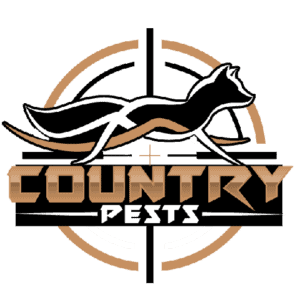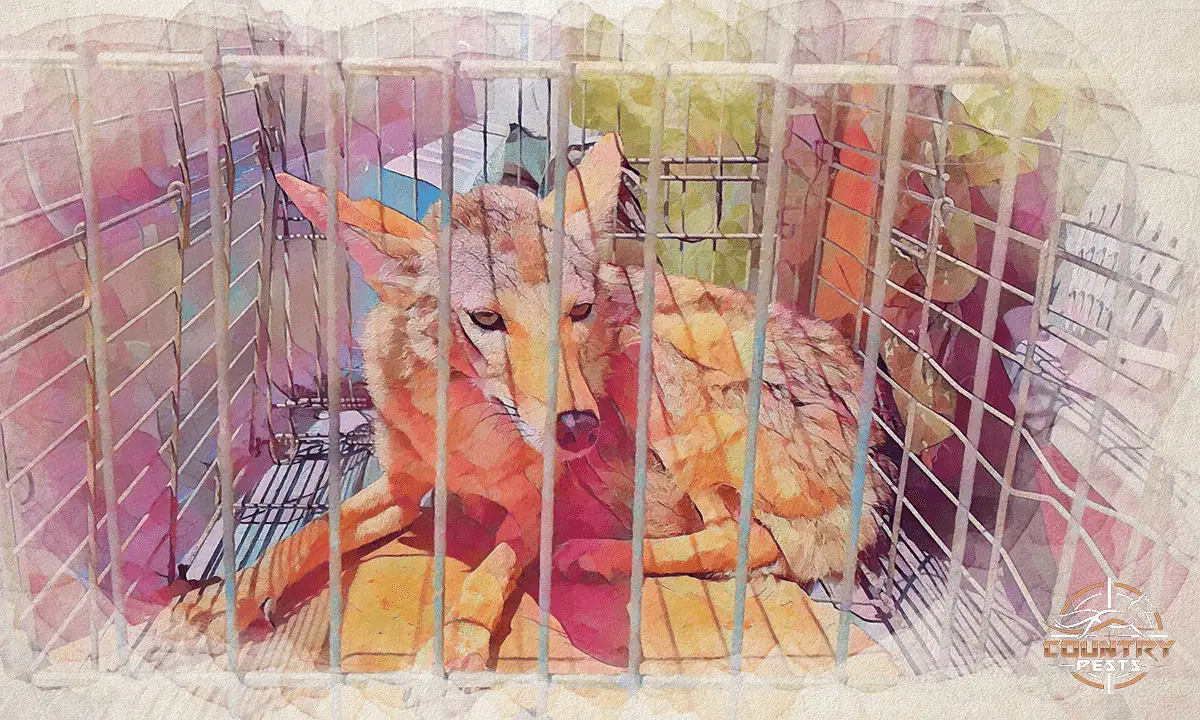My neighbor recently moved out to the country from the city, and while there are coyotes in Chicago, where she’s from, she’s not used to seeing so many of these canines strolling about, and she’s been very concerned for her pets’ welfare.
Fortunately, I could explain a few things about coyotes and how to keep her pets safe at all times and prevent heartache by keeping her pets protected from coyote attacks.
How do you keep coyotes away?
Take care of your pets whether they’re indoors or in a yard by building a six-foot fence (fitted with a roll bar to prevent jumping coyotes). When hiking or walking your dog, bring a non-retractable lead if you hike in areas where coyotes frequently go.
Coyotes are scavengers and will naturally come toward homes if they can find a free meal or a safe place to hide. While coyotes are typically quite shy creatures, they can become very aggressive when it’s the breeding season or if they feel threatened by your pets or you.
Knowledge gives you the power to act, so I’ve got all the best information and protection ideas to help you and your pets stay safe from coyotes.
Table of Contents
How Do I Protect My Pets From Coyotes: 5 Prevention Steps
Prevention is always better than cure, so I believe in being prepared and stopping a coyote attack from ever happening. However, it’s also good to ensure that if one does happen, your pets are safe and protected from damage by the coyote’s needle-like teeth and sharp nails.
Here are a few ways to protect your pets and farm animals from coyote attacks.
1. Keep Pets Safe From Coyotes by Building 6-Foot Wall or Fence
If you have dogs, rabbits, chickens, or tame miniature goats or pigs, it’s best to ensure they are kept safe behind a six-foot wall or fence. Coyotes can jump (though they aren’t known to jump high), so install a roll bar at the top of the fence or wall to deter coyotes from climbing over the top.
Patrol the perimeter of your property frequently so you can check if any openings have appeared in your fences, which can allow an opportunistic coyote to enter your yard. If you keep chickens, coyotes will have a reason to pay your yard a visit, so make it harder for them to enter.
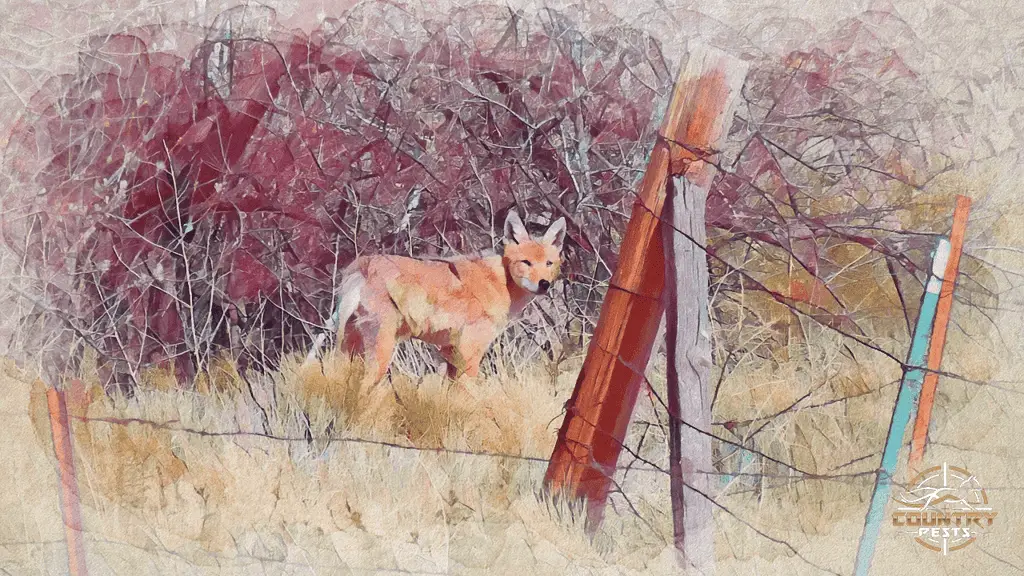
2. Install Motion-Detectors to Keep Yard Safe From Coyote Attack
By installing a motion-sensitive light sensor, motion-triggered sprinklers, and even an alarm system that responds to motion, you can make your yard unpleasant for roving coyotes to venture into at night or even during the day.
You can also add motion-triggered sprinklers, and even an alarm system that responds to motion.
Coyotes get easily frightened by bright lights and sudden sounds, so these motion-detector tools will surely protect you and your pets from any coyote attack.
3. Get Your Pets Leash or Harness To Protect Them From Coyotes
Fit your dog, cat, or other farm animals with a lead or harness to help control them if a coyote should appear. If your dog decides to chase after a coyote that suddenly popped up from the brush, you need a lead to control your pet and keep them from chasing after the coyote.
As a pet owner, I worry about my animals, and my neighbor’s concerns are definitely valid. Coyote attacks are infrequent, and a major metropolitan like Chicago only experiences 6-14 attacks per year.
Most attacks were on small breed dogs, not on a lead and under their owner’s control.

4. Don’t Feed A Coyote or Leave Pets Outside When Dark
Never feed coyotes, no matter how “mangy and hungry” they may look. Coyotes are wild animals, and they don’t need your kindness. They will literally bite the hand that feeds them.
People sometimes live in a way that attracts coyotes. After all, a coyote is a scavenger, so you need to think of how to make things less appetizing in your yard so the coyotes will stay away and out of your yard.
Cover garbage cans, don’t feed your pets outdoors, and never leave pet food outside overnight.
Avoid letting your small dogs or cats venture outside after dark. Cover poultry coops and lock feed bins containing food that may attract coyotes. Pick up your pets’ droppings as a territorial coyote may see your doggo’s doo-doo as an insult and decide to come closer for a “chat.”
Cut back on trees and bushes that have grown wildly, as these can provide a good spot for a coyote to dig their den or a place to pounce on your unsuspecting Yorkie.
An important step to keeping poultry and other livestock safe from coyotes is never to leave diseased animals or animal remains lying around, as this would attract coyotes. Even rotting fruit and food are appetizing to coyotes, so clean up and keep garbage bins covered.
5. Fit Your Small Pets With a Coyote Shirt or Vest
A coyote vest or shirt is a vest that fits over your pet’s back and neck to protect it from sudden coyote attack. The vest offers some protection as it’s usually padded and may have nylon bristles to deter the coyote from biting into the pet’s body.
These vests can also have spiked ridges that will cause a coyote to think twice before turning your Yorkie into their next meal.
Small pets such as small size dogs, cats, and miniature farm animals don’t have much of a chance against a coyote attack. Coyotes are agile and ferocious fighters. They usually strike at your pet’s neck and spine, snapping bones and quickly causing severe injuries.
I like this coyote vest as it comes in five sizes, and with the Velcro straps, it’s very adjustable, making it ideal for other pets like miniature goats and a pet pig or two.
Why Do Coyotes Attack Pets?
Coyotes attack when they smell food, feel threatened or cornered, aggressive, or rabid or sick. They also do this when there are puppies or a den nearby. Coyotes approach and attack pets, whether a dog on a leash, a small or large dog, cats, or a human.
Coyotes are considered smaller cousins of wolves and also relatives of dogs, yet we are always concerned when they are in the area. I take good care to keep my dogs indoors when I hear that a coyote has been sighted in the area since I live in a neighborhood on the urban-rural fringe.
Several coyotes are sighted in the area every month, so I know where I can go hiking with my dogs and also what time of the year is most dangerous to take a walk with my pup if I want to avoid coyote attacks.
One of the first things my neighbor asked was why coyotes would even come up to her pets. She had only always seen coyotes as shy animals. I explained that there are several reasons why a coyote may come near her and her pets, and it was best to ensure that the coyote didn’t have a reason to approach.
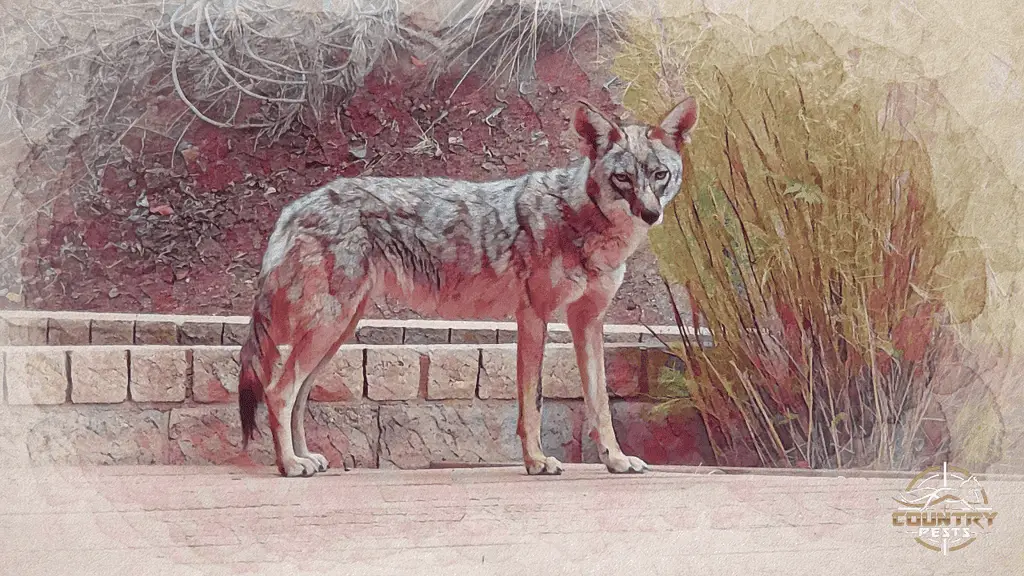
Reasons of Coyote Attack
- They smell food
- They feel aggressive because it’s breeding season, and your dog seems like an invader
- There are puppies and a den nearby
- They feel threatened
- They are cornered
- They are rabid or sick
Protecting Your Pets: How to Scare Off Coyotes?
To scare off coyotes and leave your pets alone, make a loud noise and wave your arms energetically when you see a coyote nearby. Remember to not to let your pets have the run of your property after dark.
You might also want to check out our article on whether it’s legal to kill a coyote in your yard.
You should also never allow a coyote to take food from your home, yard, or person.
Avoid walking in brush or dense areas during the winter, as coyotes are most aggressive in winter since it’s their breeding months. Also, don’t look for trouble—if a coyote goes their way and minds their business, leave them be.
For farmers, keep easy prey animals like chickens, ducks, and young animals safely locked in coyote-proof pens at night.
Once you encountered a coyote, never run from it; instead, shout, throw stones, or stamp your feet violently. Still, one of the best ways to keep your pets safe is to ensure the coyotes never come near enough to attack them. Here are a few more ways to deter even the most curious coyote:
What Can I Do to Scare Off Coyotes and Protect My Pets?
- Make a loud noise
- Throw stones or stamp feet
- Don’t feed a coyote
- Avoid walking in dense areas during winter
- Keep farm animals in coyote-proof pens
- Don’t let pets roam around at night

Types of Injuries Your Pets Can Sustain from a Coyote Attack
Coyotes don’t really hunt or prey on other animals. If they do eat your tasty broiler chicken, it’s probably because an opportunity presented itself for the coyote to snatch the bird and run off. Mostly, these canines prefer their own company and will snack on the garbage and refuse that’s been left about.
Of course, garbage cans naturally attract a coyote’s natural prey—rats—so when they knock over your garbage cans; they are actually looking for rats. Nobody likes having rats on their property, so a coyote can also be useful.
If you have a few pet farm animals such as sheep and goats, coyotes may attack these during a time of drought or in winter when their other natural prey aren’t as plentiful. Signs of coyote attack usually take these two formats:
Coyote Bite Can Create Neck Wounds
Coyotes may kill by striking at a sheep’s neck or team up and rip open the sheep’s anus or abdomen. Lambs are their prey of choice if left unattended by their mothers. Young calves can also fall victim to a small pack of coyotes, and these will usually feed on the calf’s soft tissue, such as their anus and tongue.
Similar injuries may be inflicted on small dogs and cats, so look for sharp puncture marks on their neck and anus if you suspect a coyote has attacked your pet.
Coyote Attacks Throats Resulting to Injuries
Coyotes usually attack a sheep from the front, biting the sheep’s throat area as this is where sensitive tissues and blood-rich arteries are located. The coyote will try the same approach with small dogs, trying to grip them by the throat.
A coyote shirt with a neck cuff is a good idea, and fitting a wide leather collar to your dogs (especially if there are metal spikes on it) during the coyote mating season or if your dog has to remain outside is even better.
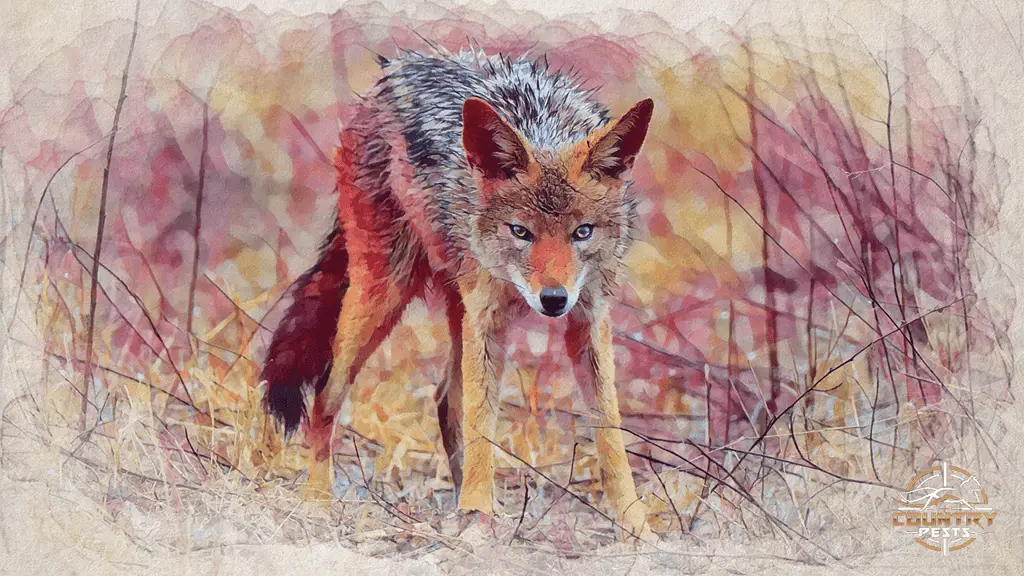
Protecting Pets From Coyotes FAQs
Pets and coyotes can’t be friends, in general. As a pet owner, it’s your responsibility to keep your pet safe from any possible coyote attack, which can definitely kill your pet or even harm yourself.
Will A Coyote Hurt A Dog, Cat, Chicken, or Goat?
A coyote may attack a dog if they feel it has invaded their territory. Coyotes may even prey on small dogs; if a coyote can catch a cat, they will likely kill it. Chickens and small or miniature goats are easy prey for coyotes, though a coyote is more likely to eat the eggs and snatch up young chicks and kid goats.
Will Coyotes Attack Pets?
Coyotes may be aggressive toward a pet, but mostly, they mind their own business unless the coyote is starving or sick. If a dog challenges a coyote, especially during winter and the coyote mating season, the coyote will attack, severely injure, and even kill the dog. In conclusion, a coyote is a wild animal that can attack in any reason, or no reason at all.
What Are The Best Ways to Keep Your Pets Safe from Coyotes?
Keep your dogs on a short lead when walking to protect it from any possible coyote attack. Bring your pets indoors or keep them in coyote-proof locked pens when it turns dark. Use a coyote shirt to protect them from coyote attacks, and secure your property with motion-triggered sprinklers and spotlights.
How To Keep Coyotes Away From My Property?
To keep coyotes away from your property, install some sound alarm or a motion-detector. Once the device detects a movement from a coyote, it will create a sound or bright lights that will frighten a coyote.
Coyotes are omnivores; they eat anything from rotting food and fresh harvests to small livestock such as young animals, birds, and eggs. While coyotes aren’t known to be serious hunters, they do and can kill small to medium-size pets. Even small children may not be safe if a coyote attacks them.
Conclusion
My neighbor has been following my advice on how to coyote-proof her property, and she’s had good success. No coyotes have managed to enter her yard, thanks to the roll bar atop her perimeter fence, and she now locks her poultry in the coop, covering any access points that may reward an industrious coyote.
She’s learned that sometimes it’s not wise to go strolling in the rough country, and she keeps her beloved Rottweiler on a short lead when walking to prevent any nasty incidents. Her little chihuahua wears a small-size coyote vest when they walk, and she carries an air horn with her to scare off any coyotes that may come too close or become too inquisitive.
We humans and coyotes all share nature, and we must find a way to work and live together in peace and harmony. The best deterrent is leaving coyotes to remain wild, never feeding or approaching them if you should cross paths. They will respect us if we respect them. To learn more about using lights and sprinklers to deter coyotes from entering your yard, read our in-depth overview of the best motion-activated sprinklers and lights.
